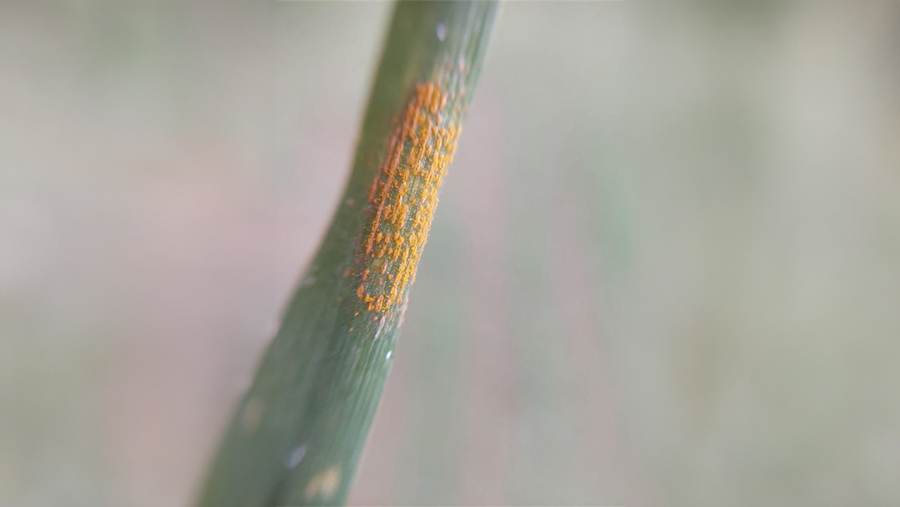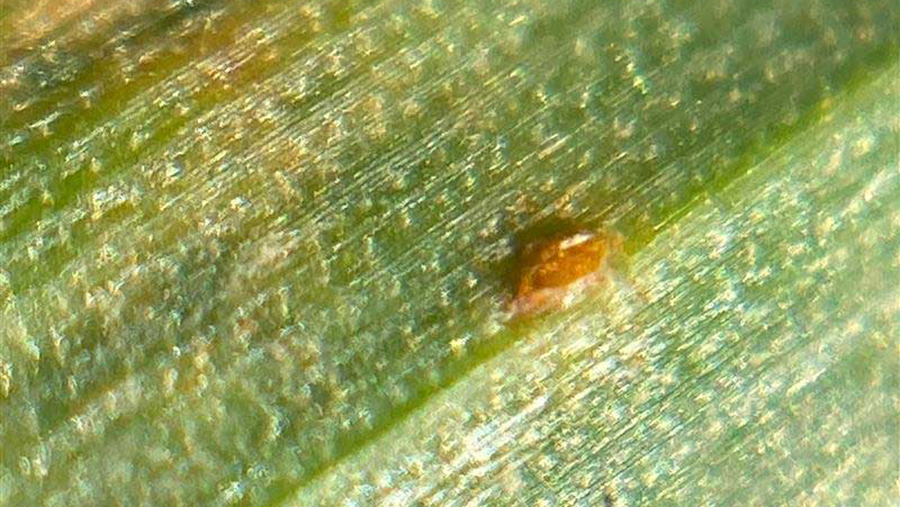Advertiser content
Expert advice on building your fungicide programmes

Fiona Burnett © BASF
When it comes to fungicide programmes for the year ahead, growers should firstly consider the inherent disease risk their crops face from factors such as variety, place in the rotation, establishment method and drilling date.
This is all part of an integrated pest management strategy (IPM) which also includes practical measures for optimising fungicide use.
Plant Pathology and head of Knowledge Exchange and Impact SRUC, Fiona Burnett (photo above) explained:
“I like the idea that people plan out their programmes in advance so that they can work in that diversity of chemistry, mixing and if they can, alternating active ingredients.
“Fine tuning of the dose rate can then be done as the season progresses, with growers regularly checking their crops in order to be aware of what is going on.”
- Mix fungicides from different groups
- Minimise the number of times you use an individual active
- Minimise the dose
- Reduce the dose in a balanced way, do not leave the other partner exposed
- Judge what is needed in the field at that time
Yield potential this year
This year is providing a stark and welcome contrast to the previous one.
Fiona said, “It was a much easier autumn for drilling so the winter cereal crops look amazing. They are even, well established and well tillered.”
Azoles: The backbone of fungicide programmes
“For both wheat and barley crops, azoles remain the backbone to the fungicide programme. When we are diversifying or mixing, generally it is always with an azole,” said Fiona.
Aoife O’Driscoll (photo right), senior specialist, Niab said:

“In wheat, there is no question that Revysol (mefentrifluconazole) is the strongest azole that we have against brown rust and one of the strongest on septoria, with useful activity against yellow rust as well.
“So, getting that into the programme is a very useful tool.
“With two new SDHIs available in the last year, these have to be protected to ensure their longevity.
“Using Revysol in the programme, be that in Revystar XE (mefentrifluconazole + fluxapyroxad ) or RevyPro (mefentrifluconazole+prothioconazole) can protect these other modes of action.”
In barley, Revysol® and prothioconazole are the two best azoles for disease control.
Using RevyPro®
RevyPro® has a unique formulation, optimising complementary activity from Revysol® and prothioconazole, with flexibility in application timing and rates.
Fiona said: “With RevyPro you get something slightly greater, in terms of disease control, than the sum of the parts.
“Revysol and prothioconazole are the two leading azoles and at the rates that RevyPro is advised and mixed, it is not increasing the amount of azole, which is good for stewardship.”
Barley
When it comes to winter barley, Fiona said: “The best response to fungicides on winter barley is at T1 and so I would place RevyPro, with its broad spectrum of activity, firmly at T1 on winter barley crops.
BASF’s Jared Bonner agrees with Fiona:
“We are starting to see some rust coming into hybrid barley varieties, alongside the usual early diseases, net blotch and Rhynchosporium and so using RevyPro would be a fantastic decision to deliver broad spectrum control.”
Thinking now about spring barley, Fiona states:
“RevyPro covers all bases and is a good choice for T2 with a more generic risk assessment, where you are going for yield and quality, but not flagging a really high ramularia risk. “Having a cut off at GS 69 will also be really helpful” said Fiona.
RevyPro is approved for use on malting crops.
Winter Wheat
“If plans are made now, then RevyPro could be worked in at either the T1 or the T2 timing depending on the risks growers are faced with.
Revystar® XE
Revystar® XE continues to be a good option for growers in 2025. Jared highlights:
“Based on what we are currently seeing across the country, an all-rounder like Revystar XE is looking like a good fit. It brings the broad spectrum control needed at fantastic value in 2025.
“Using Revystar XE at T1 then opens up your options later in the programme.”

Yellow Rust © BASF
Yellow rust: Found in wheat varieties with high resistance scores
“Yellow rust is fairly easily found in winter wheat at the moment and that is not uncommon, but it has appeared earlier than last year. If yellow rust establishes then it is very difficult to control but if you act at the early stage, it is easier to get on top of. Azoles are the backbone of the yellow rust programme. We are also seeing yellow rust in wheat varieties with high resistance scores.
“For example, we have seen yellow rust in KWS Dawsum which has an AHDB Recommended List rating of 9 both for seedling and adult plant resistance.
“Again, this is not unusual for yellow rust, it evolves new strains, but it is disappointing to have seen it in a variety with such a high resistance rating.”
Fungicide Resistance Action Group (FRAG-UK): Watchouts for wheat crops in 2025
As chair of FRAG-UK, which produces advice and recommendations to manage emerging resistance issues, Fiona said:
“From a resistance perspective, every year brings a few un-welcome additions and last year was no exception.”

Septoria © BASF
Septoria: Strains get ever more challenging and diverse
“Last year there were no new outliers, however, there were more that were sitting at the ‘problematic’ end of the chart for the SDHIs.
“The result of that is inevitable; more complex and harder to manage strains“, commented Fiona.
Brown rust: Resistance in brown rust to the SDHI fungicides

Brown Rust © BASF
“It is really unusual for a rust to develop a fungicide resistance. They often break varieties but they have been really stable when it comes to our fungicides.”
The other message Fiona was keen to impart is that: “Rusts are really specific to the crop, so the issue of brown rust in wheat isn’t worrisome for barley or rye.
“However, it’s still a pointer that using diversity is a wise approach.”
The challenges of managing wheat and barley crops are constantly evolving. As we enter spring, it will be crucial to manage the crops appropriately.
Utilising Revystar® XE and RevyPro® in your wheat or barley programmes will provide the broad spectrum control and flexibility needed this season.
Visit our website for more information on Revystar® XE and RevyPro®
Revystar® XE: Revystar XE – BASF Agricultural Solutions UK
RevyPro®: RevyPro – BASF Agricultural Solutions UK
Provided by
BASF offers renowned and innovative fungicides, herbicides, insecticides and growth regulators for agriculture. Our products and services help farmers increase their yields and optimize the quality of their products.
